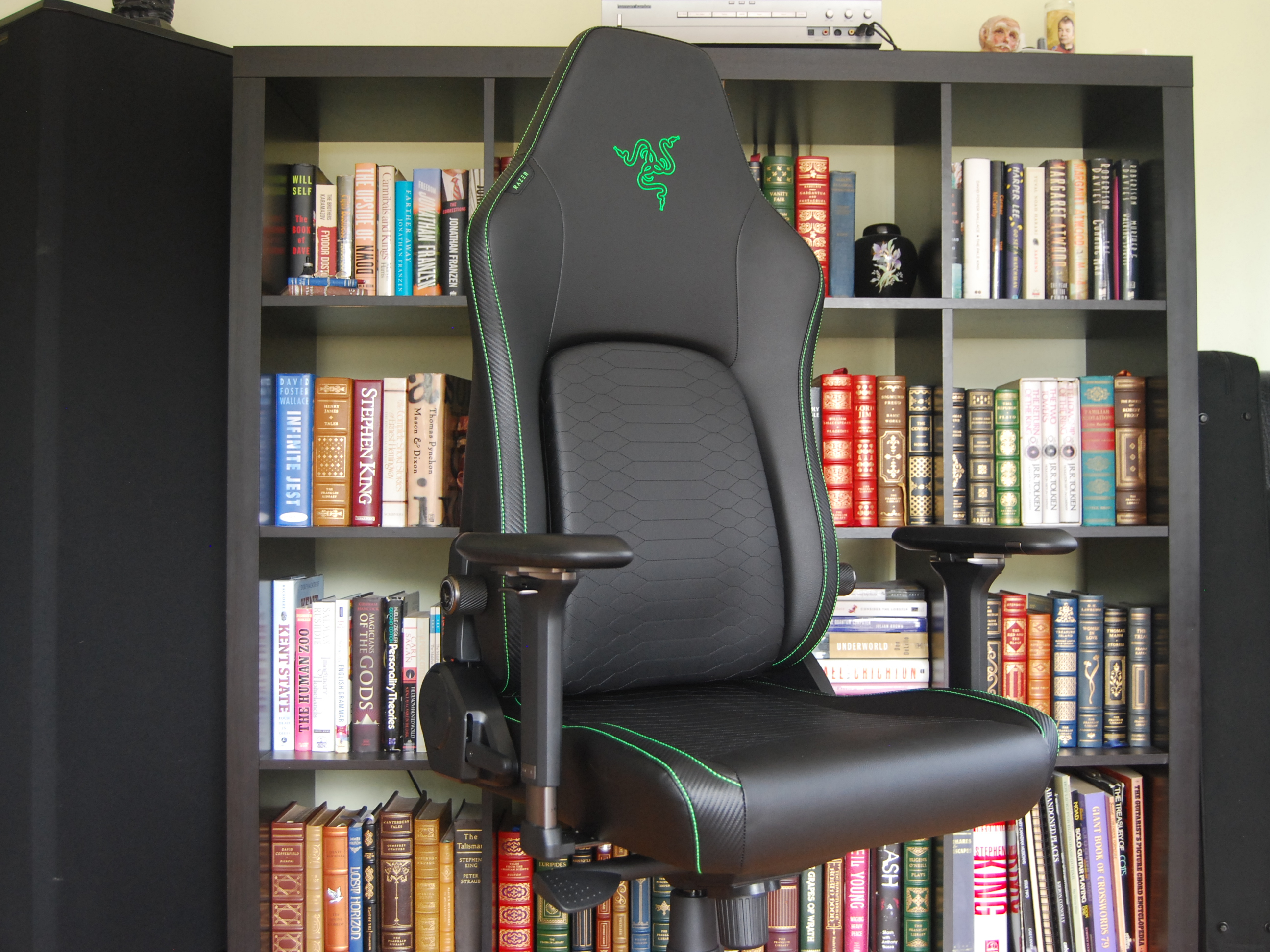
Razer's influence extends far beyond high-end gaming laptops like the Razer Blade 16.
Its office and gaming accessories are some of the most popular out there, and its distinct branding and design make it all the way to gaming chairs.
I've had Razer's Iskur V2 — the successor to the original Razer Iskur reviewed by Editor-in-Chief Daniel Rubino in 2020 — parked at my desk for a couple of weeks, handling my daily work and nightly gaming demands.
While I'm enjoying its extensive lumbar support and 4D armrests, it's not quite as impressive as the hype (and $650 price tag) might suggest.
I want to be sure you know exactly what you're buying. Here's what I love about the Iskur V2 and what doesn't impress me.
Razer Iskur V2: Cheat sheet
- What is it? A premium gaming chair with adaptive lumbar support, 4D armrests, and faux leather or fabric finish.
- How much does it cost? Starts at $649.99.
- Who is it for? Gamers, office workers who require extra back support.
- What do I like? Superior lumbar support, fully-adjustable padded armrests, sturdy construction without creaking.
- What don't I like? Hard seat pan, cheap plastic casters, pillow headrest.
Razer Iskur V2: Pricing, specs, & availability
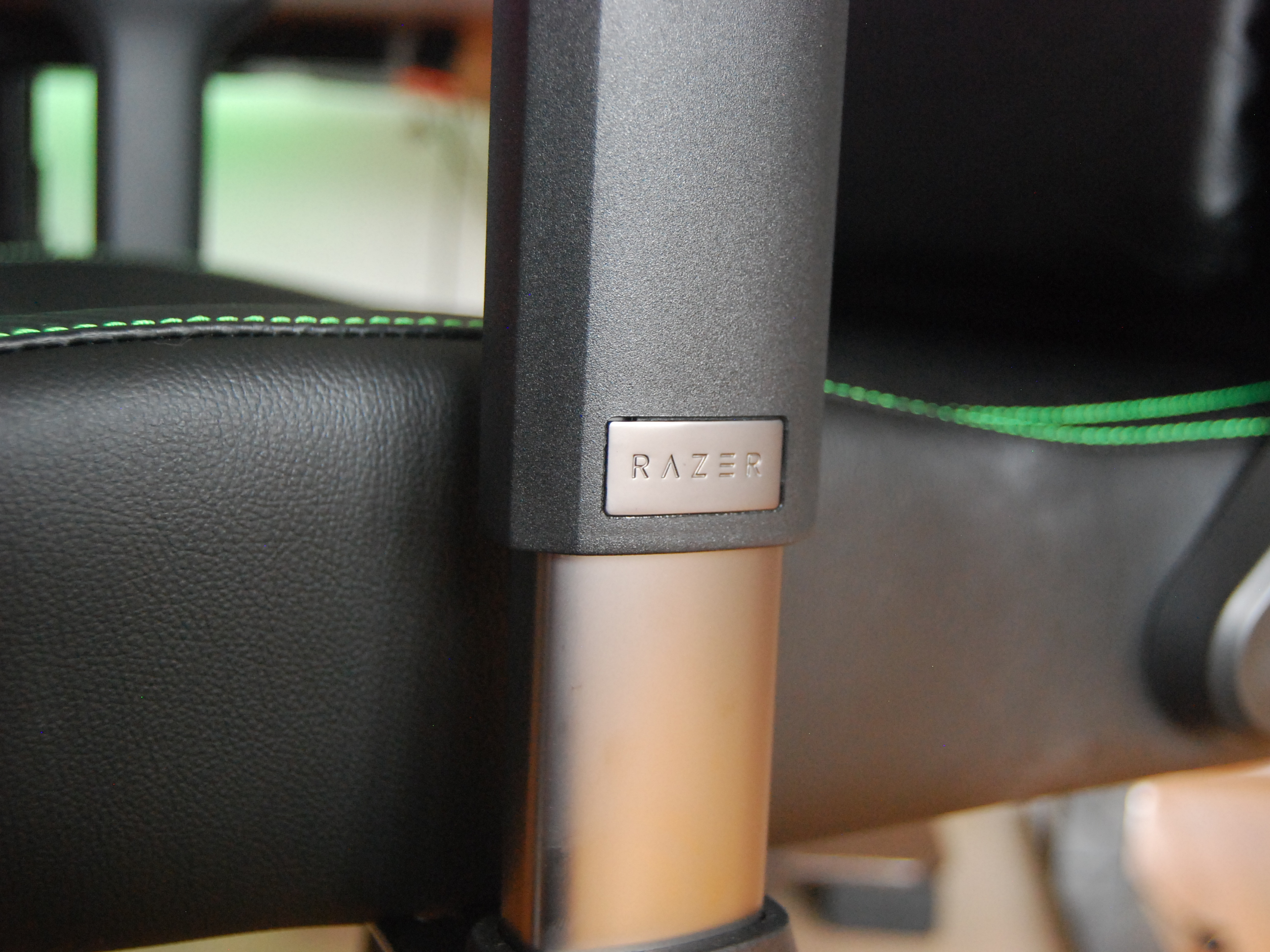
Razer's Iskur V2 gaming chair was announced at CES 2024 and was available to buy not long after.
• Price: $649.99 at Best Buy
• Material: EPU leather, multi-layered fabric
• Frame: Steel
• Base: 5-star aluminum/steel
• Foam: High-density PU molded foam
• Armrests: 4D
• Casters: Plastic
• Lumbar: Built-in, adjustable support
• Warranty: 3 years
• Colors: Black/Green, Black, Dark Gray, Black with Green THS, Light gray with Green THS
• Recommended height: 5.24 - 6.56 feet (160cm - 200cm)
• Recommended weight: Maximum 299lbs (136kg)
On the market for more than a year, the price has not come down at all from the introductory $649.99.
The Iskur V2 is available to buy directly from Razer, where you'll find the best customization options.
The chair is available in black faux leather with black or green stitching. It's also available in a fabric finish with a "Dark Gray" color.
You can also find the Iskur V2 for sale at $650 at Best Buy and $649 at Amazon.
It's also worth mentioning that Razer offers an Iskur V2 X in a Light Gray or Black/Green fabric combination.
It's a lot more affordable at about $300, but it lacks some of the high-end accoutrements found in the Iskur V2, including adaptive lumbar support.
Razer Iskur V2: What I like
After spending a couple of weeks (about 120 hours total between gaming and work) in the chair, I have a clear idea of what works well.
Here's the stuff I really like about the Razer Iskur V2.
Lumbar support doesn't get better
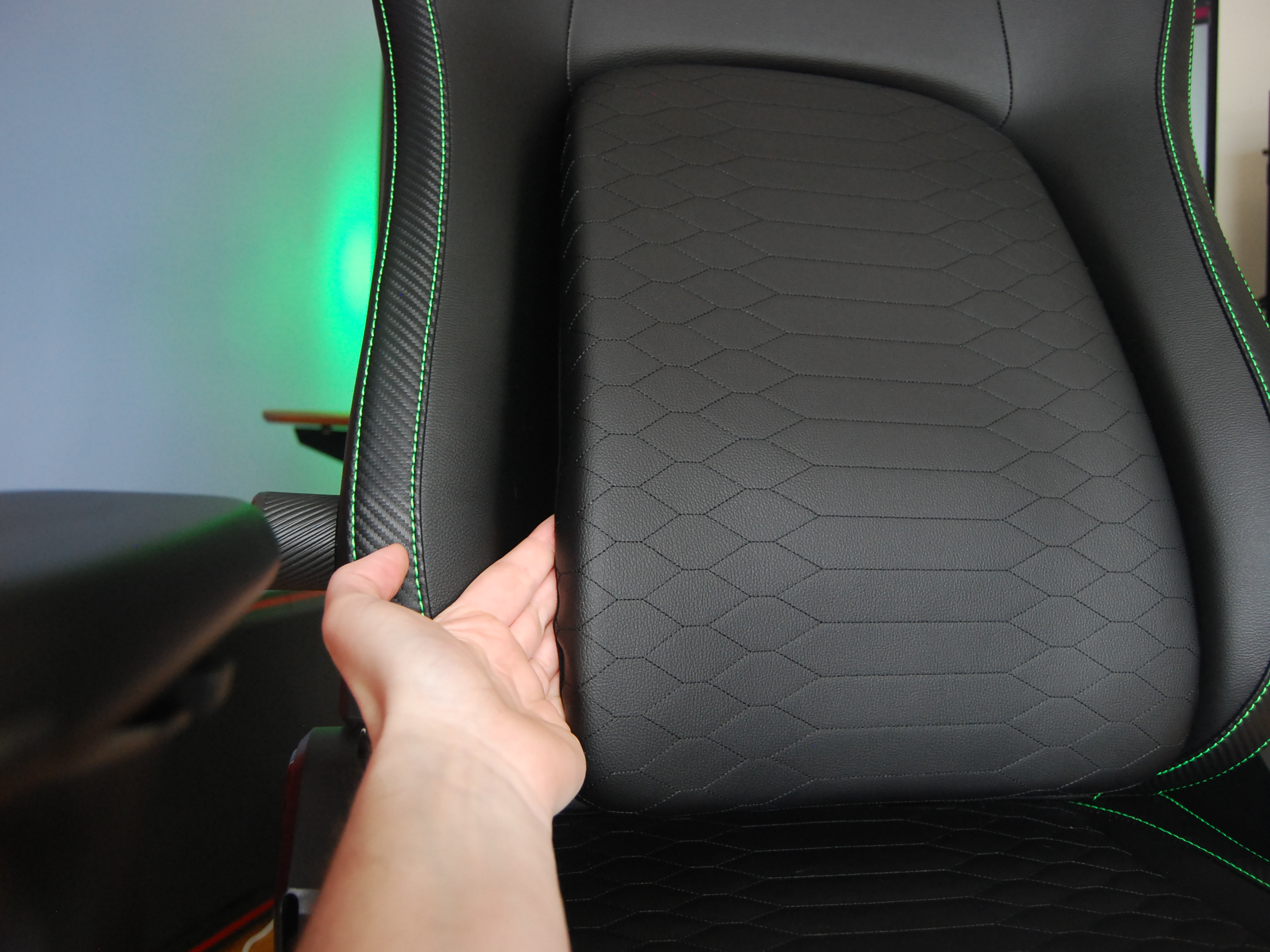
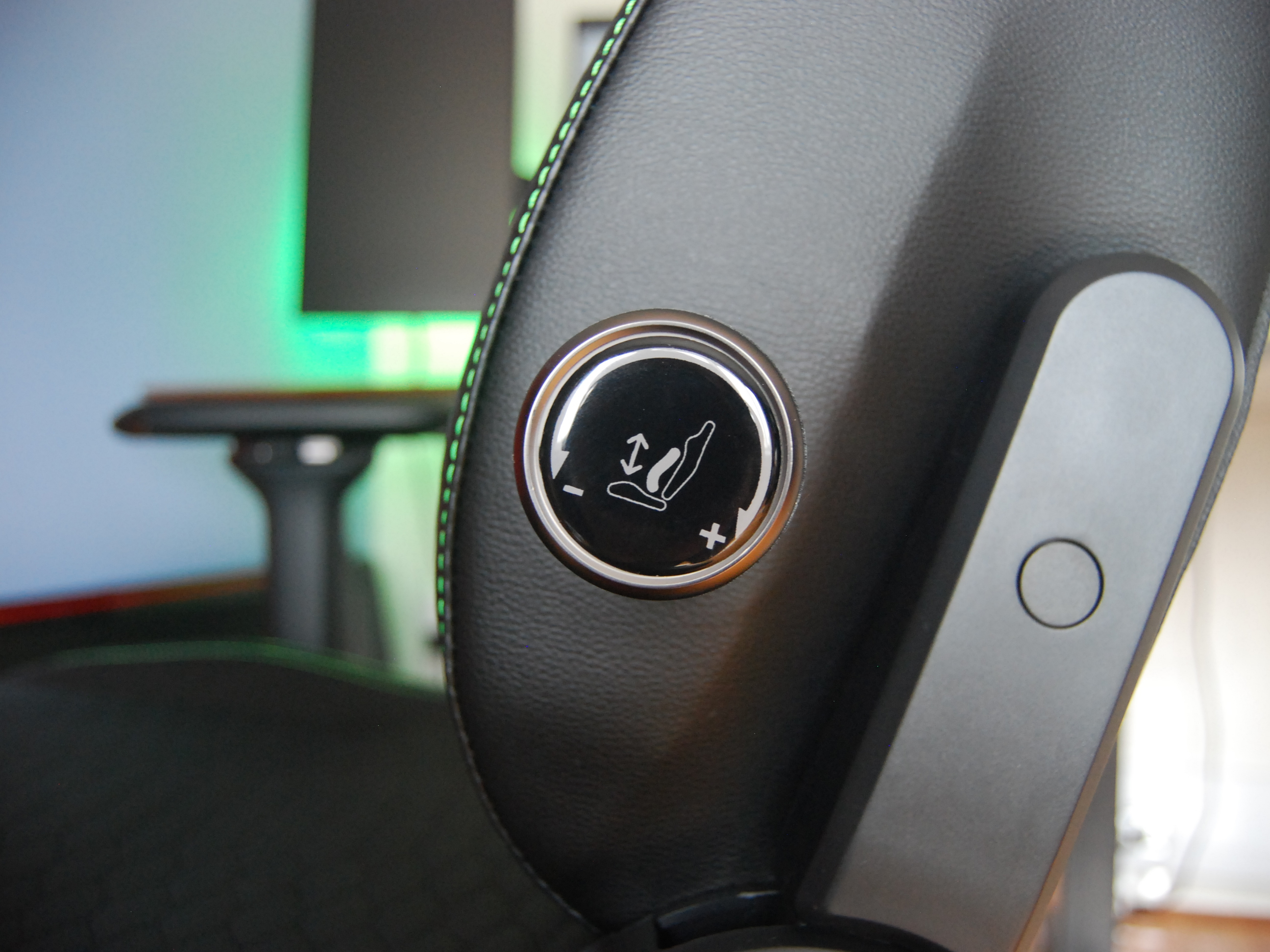
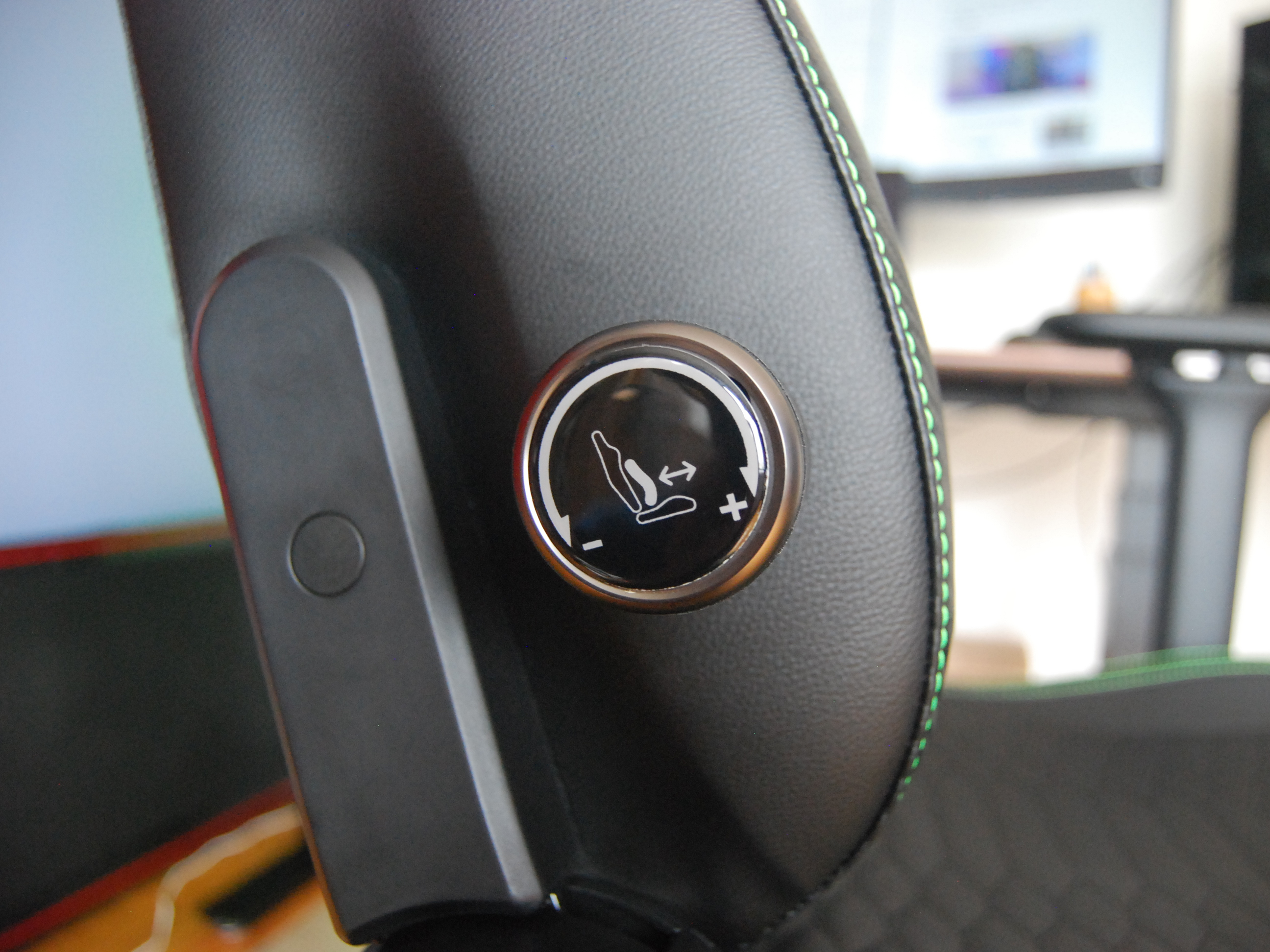
The big selling point for the Iskur V2 is its adjustable (and adaptive) lumbar support.
Whereas many chairs have a dial to add or subtract lumbar depth beneath the cover, Razer's solution sees a big portion of the backrest partly separated from the rest of the chair.
This allows me to tweak the depth (with 40mm of movement) and height (with 60mm of movement) of the lumbar support.
Lumbar positioning is handled by two large dials, one on either side of the chair. They're easy to reach while you're sitting, and it only takes a few seconds to get set up.
I'm someone who squirms around in my seat while I'm gaming and writing, but the lumbar support is designed to swivel left and right to keep in contact with my back. I can feel it moving when I shift.
I'm about 6'3" tall, and the support hits me in the back right where it should.
I also want to add that the backrest is wide enough not to dig into my shoulders when I'm sitting back.
Premium build quality

Razer typically makes high-end products, and the Iskur V2 is no different when it comes to build quality.
The chair, even without the base attached, is quite heavy due to a steel frame inside.
The aluminum and steel five-point base is heavy, sturdy, and balanced. There's no creaking or clanging when I stand up or sit down, and the stitching is clean and tight.
I have the synthetic EPU leather model with black cover and green stitching.
The faux leather doesn't feel plasticky or cheap, although I do wonder how breathable it'll be when summer months come around.
The chair offers adjustable and toggleable tilt (there's a large dial on the bottom to tweak resistance), and the backrest lies back to sit nearly flat.
Everything works. How well it might hold up after a year or two, I can't honestly comment on.
Fully-adjustable armrests
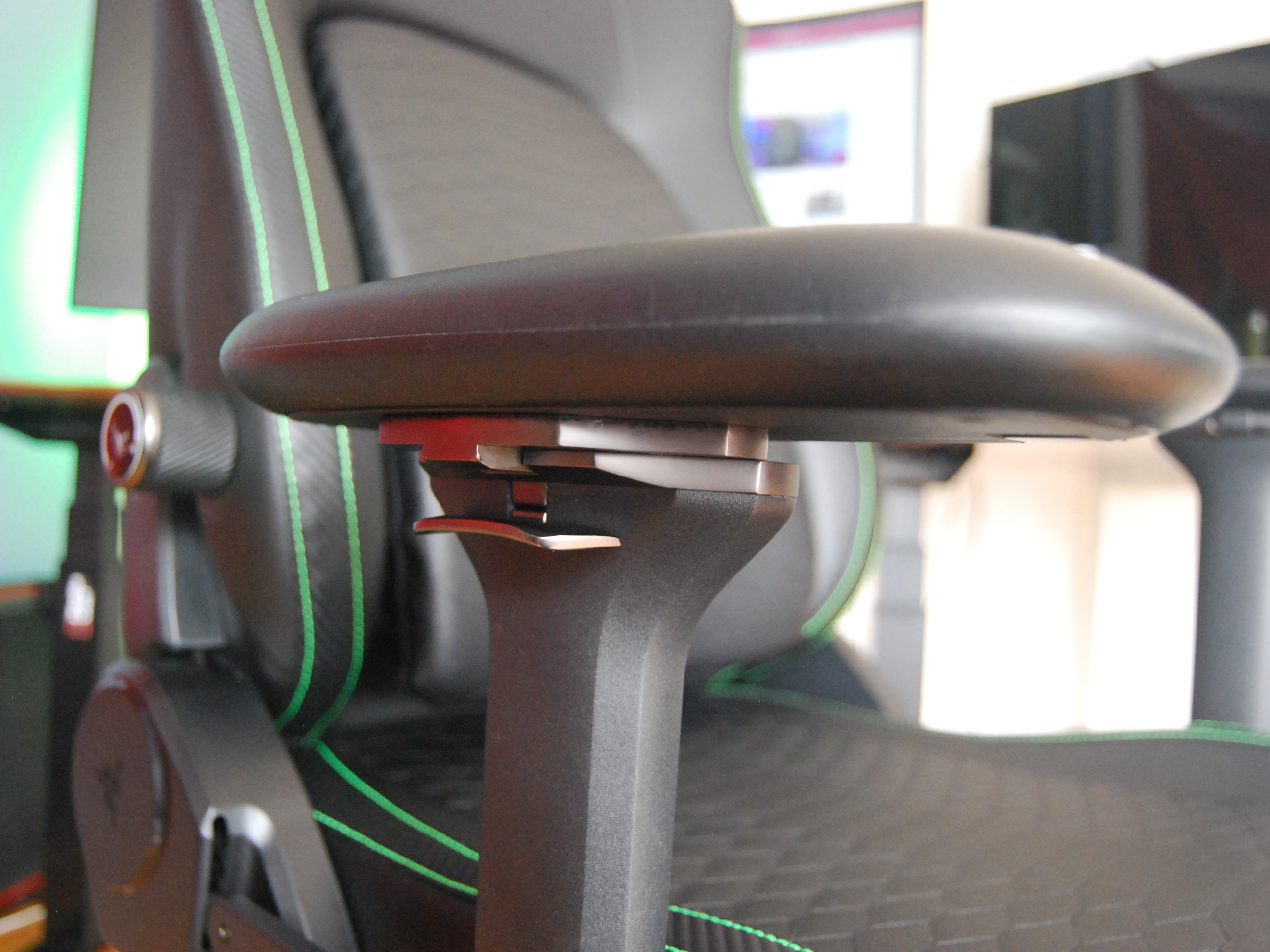
Armrests are one feature for which I'm particularly picky. Thankfully, Razer nailed the 4D armrest design.
They move up and down, forward and back, in and out, and they even rotate.
The top is covered in a textured, rubbery finish that keeps my elbows from hurting; it's not soft, but it's not so hard that you feel any fatigue.
There's a bit of jiggle due to all the moving parts inside, but I've yet to test or use a chair that didn't have some minor movement when the armrests are locked in.
Razer Iskur V2: What I don't like
With the pros out of the way, I now turn to some of the cons I've discovered during my two weeks with the Razer Iskur V2.
I've been using X-Chair's X-Tech Executive office chair for a couple of years, and it remains the most comfortable chair I've ever used.
It does, however, cost nearly three times as much as the Iskur V2. I've kept that price difference in mind when testing Razer's chair.
Uncomfortable seat pan
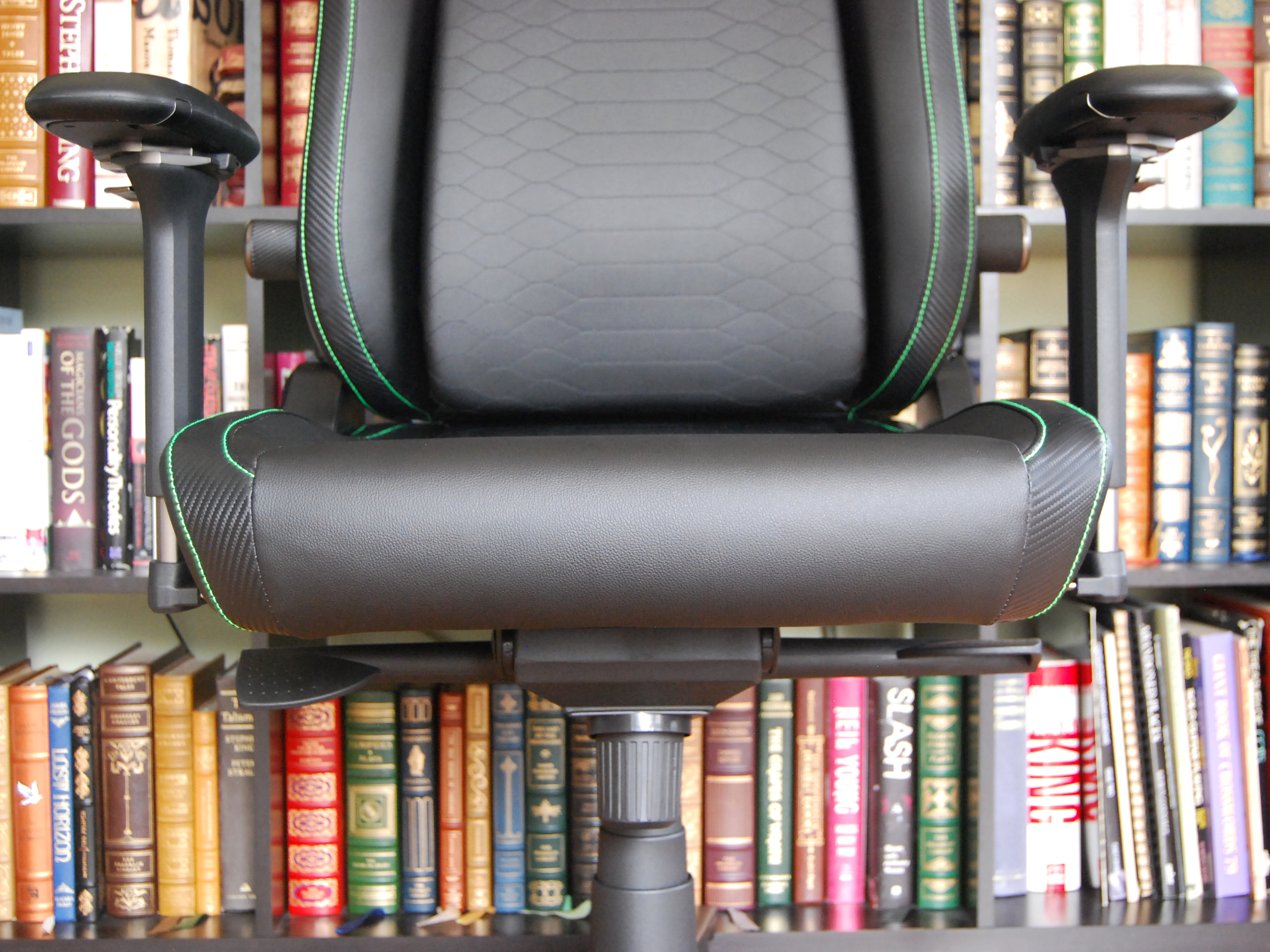
Sitting down in the Iskur V2 for the first time, my immediate thought was: Where's all the seat padding?
Asking my partner to sit in the chair with no prompting, she came to the same conclusion.
The seat pan is much wider on the V2 version, and I appreciate that it doesn't dig into the sides of my legs when I'm sitting.
However, Razer's dual-density foam cushion — which, in theory, is designed to spread pressure across your legs and butt — doesn't provide much comfort.
Seat depth isn't adjustable, either. I'd prefer a bit less depth than what comes stock, but there's no way to change it.
I know the foam is supposed to get more comfortable as you use it, but I feel like I'd be noticing some of those improvements by now.
So far, comfort on one of the most important parts of the chair is lacking.
Cheap casters
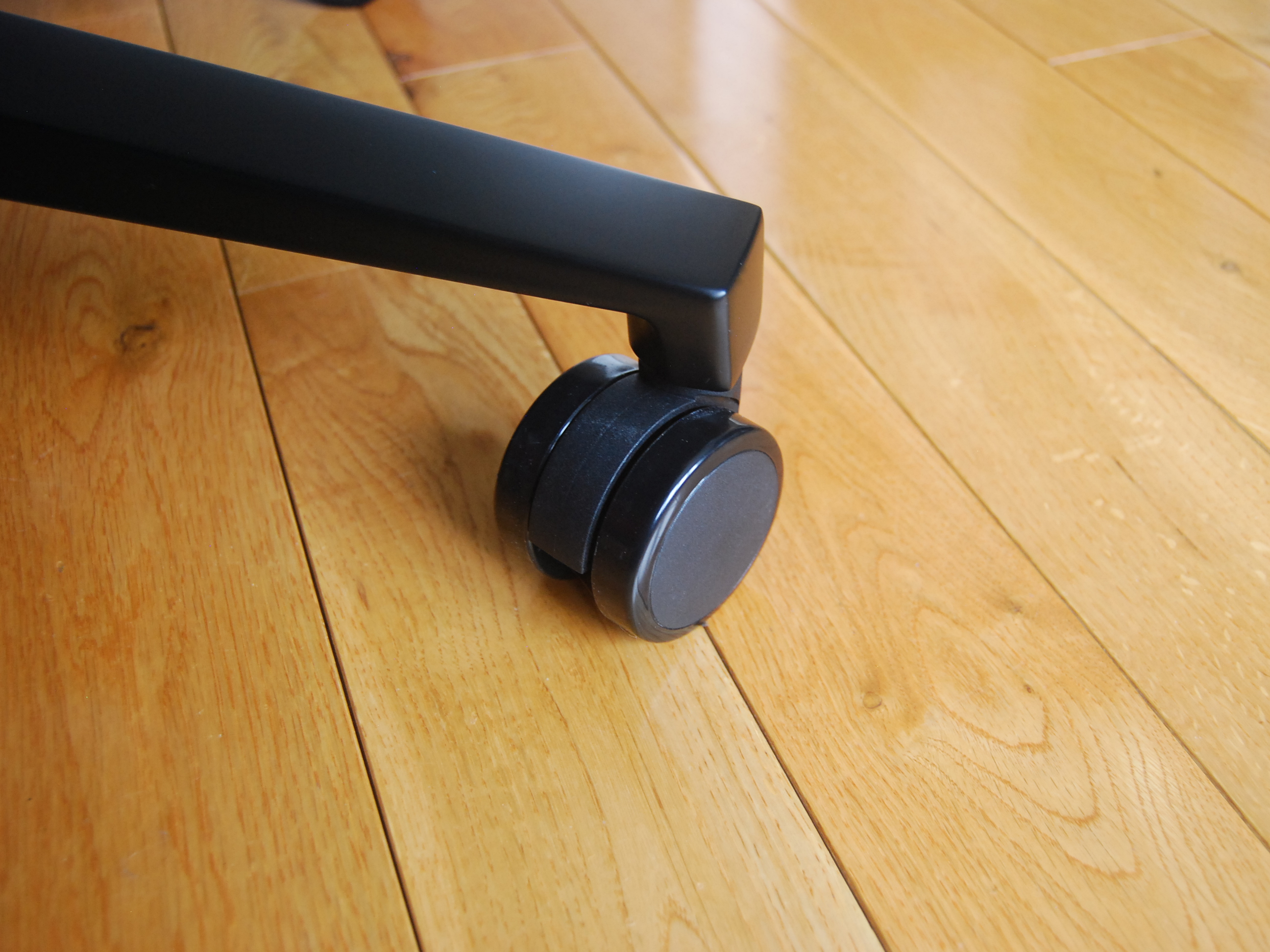
My office is floored with hardwood, and I've been worried about scratching it ever since I put the Iskur V2 together. Thank goodness for my office mat.
The casters are definitely a weak spot where Razer cut corners. They're plastic throughout other than the anchor post, which is metal.
The casters don't roll that well (carpet would likely disable them completely), and I'm concerned they'll break at some point despite me coming in well below the maximum 299lb weight recommendation.
Headrest is nothing special
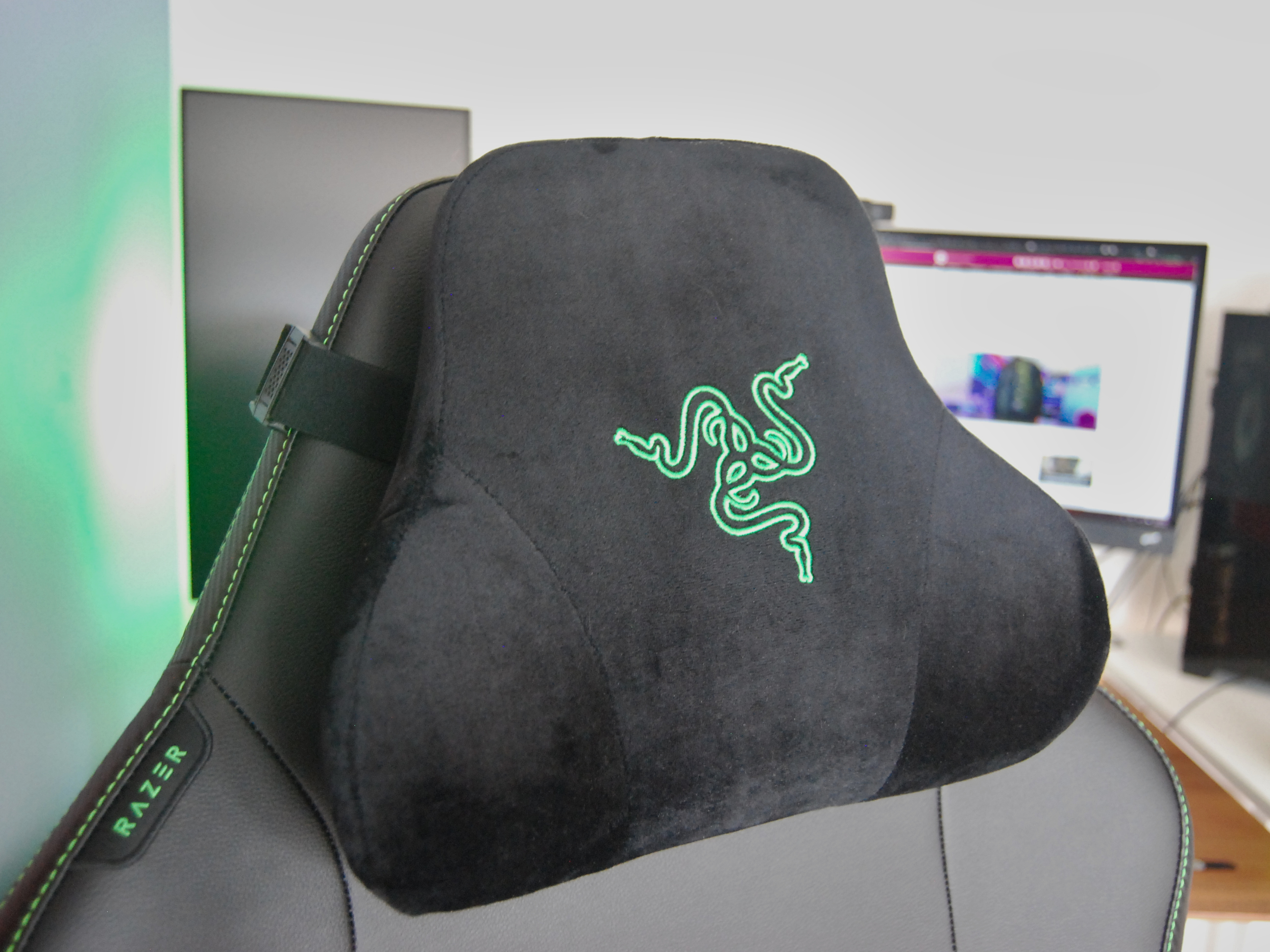
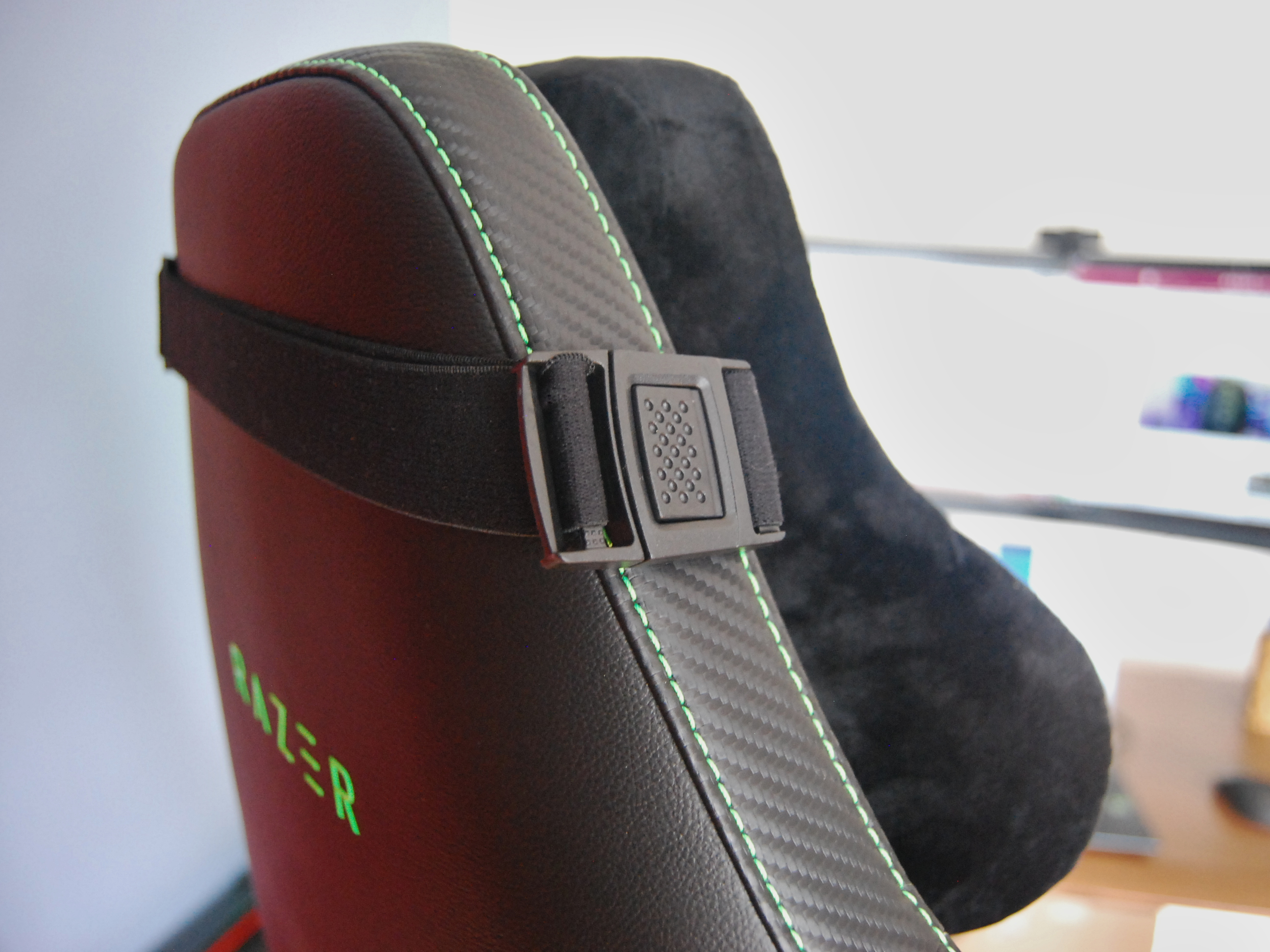
Like many companies making gaming chairs, Razer's headrest solution is nothing more than a pillow that can be attached to the chair with an adjustable elastic strap.
The foam inside the pillow is soft and spongy, and the material on the outside is luxurious. Can't fault Razer there.
My issue is that without the pillow, all you have is a straight-backed section that's mostly devoid of padding under the faux leather.
It just seems a bit cheap on a chair that costs more than $600, though I know this is the normal setup for gaming chairs.
I do have to say, I'll be taking Razer's pillow with me on my next flight. The adjustable elastic strap should allow it to attach to any plane seat, and it is, as I mentioned, very comfortable.
Is it big enough?

I thought I was doing something wrong when I first set up the Iskur V2, but it turns out there's just not a lot of height available for adjusting.
At 6'3", I have the chair at its maximum height, and it's just on the cusp of being too low to comfortably sit in front of my desk.
The 6'5" maximum user height set by Razer is definitely right at the limit.
Razer considers this a medium chair, and I hope to see an XL version in the future. Razer made an Iskur V1 XL, so it's a possibility.
Razer Iskur V2 review: My final thoughts
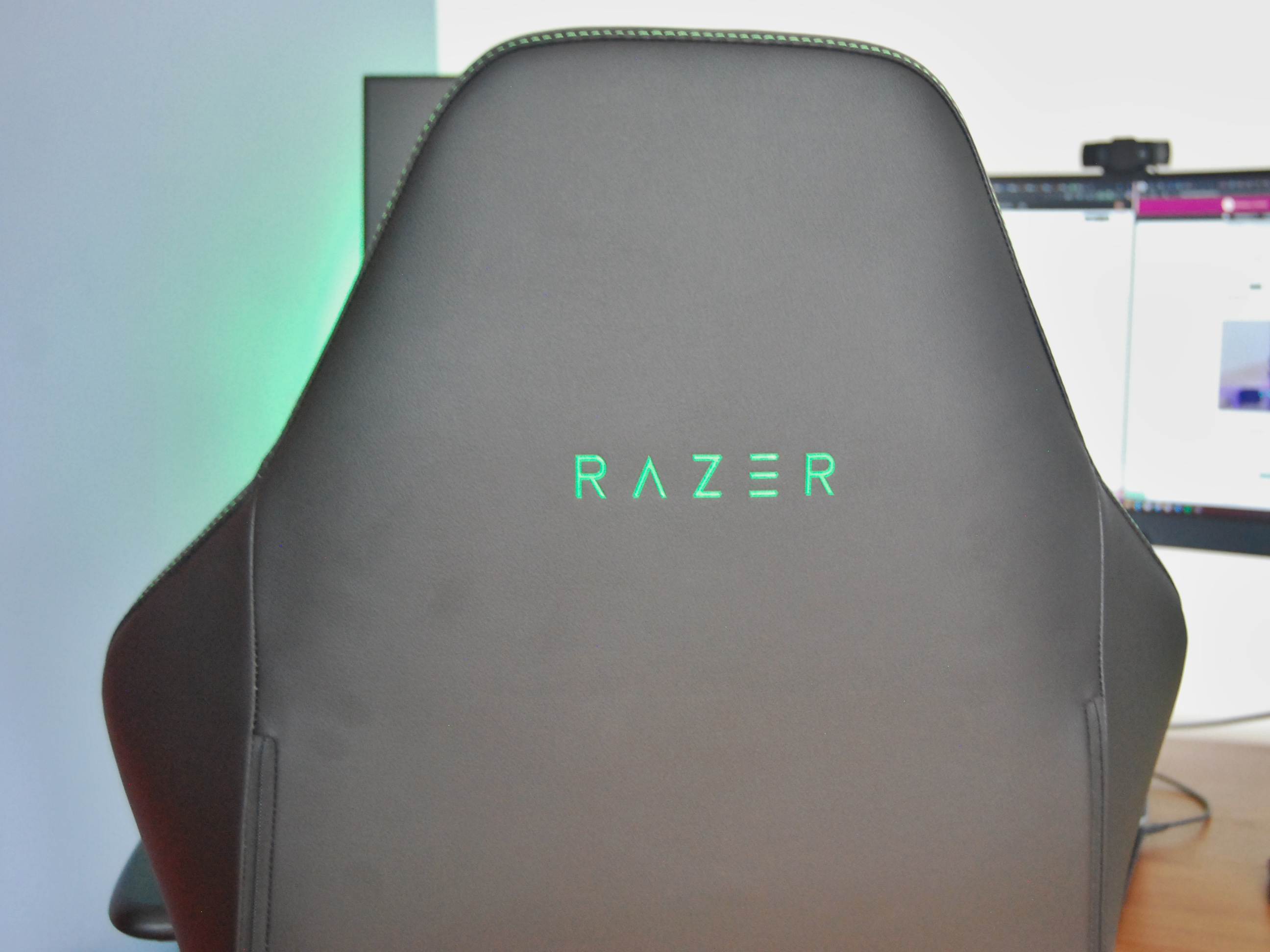
✅ You should buy this if ...
- You value lumbar support over seat cushioning.
- You don't see the need for a real headrest.
- You prefer 4D armrests with full range of motion.
❌ You should not buy this if ...
- You want high-quality casters that work well with any surface.
- You want a seat with plenty of cushioning.
- You're taller than 6'3".
The gaming chair market is largely filled with the same racer-style seats with different branding. They range in price quite a bit, but the high-level stuff is mostly dominated by the likes of Razer and Secretlab.
👉 Related: Secretlab TITAN Evo NanoGen review
The Iskur V2's adaptive lumbar support is the best I've experienced from any chair, even topping the X-Chair X-Tech's adjustable support.
The chair seems to always make contact with the hollows of my back, providing plenty of support no matter how I'm sitting.
It's too bad the seat doesn't offer the same level of comfort.
👉 Related: Secretlab Titan Evo 2022 review
The dual-density foam might get more comfortable as I use the chair, but after more than 100 hours of sitting, it has the same hard feel as when I first put it together.
That's really the biggest sticking point for me, and if you already find sitting for long periods uncomfortable (I'm sure plenty of gamers and office workers can relate), this chair isn't going to do anything for you.
I plan to return to my X-Chair if only for the seat padding and superior casters that I know won't scratch my floor, but I'll be thinking about the lumbar support I'm missing out on.
Razer's Iskur V2 has the best lumbar support I've ever tested, so it's a shame that the seat is so uncomfortable due to a lack of padding. I can see the chair working well for younger gamers who have yet to feel the effects of aging, but for full-time professionals, I urge you to spend more on something that'll be comfier in the long run.







